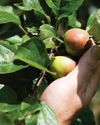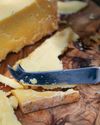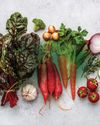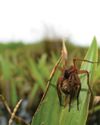
While researching where to set my second novel, I recently rediscovered the Isle of Purbeck. I had first visited as W a teenager, spending several summers staying with my best friend and her family in Swanage. They rented a chalet a little way inland and a beach hut just above the sandy bay, and Karen and I whiled away our time sunning ourselves, or when it rained, huddling in the hut hugging mugs of cocoa. Later, when my children were young, I brought them to the beaches near Studland.
Forty years on from my first visit, I was delighted to find that Swanage hadn't changed all that much: it's still a traditional English seaside town with pubs, fish and chip shops, and an amusement arcade, where Karen and I used to cruise the slot machines for dropped coins. But now, less interested in the bright lights' of Swanage and without young children in tow, I wanted to explore the interior of this beautiful peninsula.
Following the sandy paths that snake through Godlingston Heath, behind Studland Bay, I stumbled upon the Agglestone, although it's not something you can actually stumble upon, given it's a 400-tonne solitary sandstone boulder perched on its own little hillock overlooking the sea. It's said the devil threw it from the Isle of Wight, and it was originally anvil-shaped until a partial collapse in 1970; now it looks like a boxer with a flattened nose. From the Agglestone, it's a dazzling walk through the heather to the sea, stopping for a swim and a quick drink at the Bankes Arms, and up again, if you have the energy for it, to Old Harry Rocks. Here, looking out across the water, I knew the Isle of Purbeck was where I would set my second novel.
ALMOST ISLE
Diese Geschichte stammt aus der July 2022-Ausgabe von BBC Countryfile Magazine.
Starten Sie Ihre 7-tägige kostenlose Testversion von Magzter GOLD, um auf Tausende kuratierte Premium-Storys sowie über 8.000 Zeitschriften und Zeitungen zuzugreifen.
Bereits Abonnent ? Anmelden
Diese Geschichte stammt aus der July 2022-Ausgabe von BBC Countryfile Magazine.
Starten Sie Ihre 7-tägige kostenlose Testversion von Magzter GOLD, um auf Tausende kuratierte Premium-Storys sowie über 8.000 Zeitschriften und Zeitungen zuzugreifen.
Bereits Abonnent? Anmelden

Guilt-Free Meat? - Should the world stop eating meat to tackle the climate crisis? Chris Baraniuk meets an experimental farmer who says we don't all have to become vegetarians
Should the world stop eating meat to tackle the climate crisis? Chris Baraniuk meets an experimental farmer who says we don't all have to become vegetarians. Livestock farming around the world is facing scrutiny because of its greenhouse gas emissions. Globally, the sector contributes somewhere between 11.1% and 19.6% of total emissions. Meat production is roughly twice as bad as the production of plant-based food, according to some analyses. And beef is the worst of all. Study after study has suggested that, in order to curtail the devastating effects of climate change, we ought to shift to a diet containing less meat - or even go vegetarian or vegan.

Discover Cider Country - Explore mellow golden countryside, pedalling between medieval villages, historic inns and fruitful orchards, on a delightful Herefordshire Cider Circuit adventure with Julie Brominicks
Explore mellow golden countryside, pedalling between medieval villages, historic inns and fruitful orchards, on a delightful Herefordshire Cider Circuit adventure with Julie Brominicks. I'm cycling Porter's Perfection, one of three cider circuits developed for Visit Herefordshire over the past few years. Each showcases a section of this bucolic county's loveliest villages, pubs, orchards and cidermakers via lanes suited to bicycles - e-bikes for hill-averse cyclists like me. The idea is to allow you to appreciate the sights, sounds and smells of cider country while traversing roads never meant for modern cars. If you have dodgy knees, or are keen to indulge in the local adult apple juice as you go (remember, it's illegal to cycle while under the influence), Visit Herefordshire also promotes cider bus routes.

TOP 10 WILD AUTUMN FOODS
Make the most of seasonal abundance with foraging tips and recipe ideas from wild food expert Liz Knight

The taste of England
Amid pastures farmed by her family for more than four centuries, Mary Quicke is reviving forgotten dairy traditions to produce delicious Devon cheeses

How to eat 30 plants a week
As science proves the many health-boosting benefits of eating at least 30 different plants each week, Hugh Fearnley-Whittingstall shares recipes to help you meet the magic target

RARE RAFT SPIDER MAKES A COMEBACK
Thanks to dedicated conservation work, this impressive but vulnerable arachnid is resurgent in East Anglia

SPECTACULAR STONEHENGE FINDS
Following the latest astonishing revelation about the Stonehenge Altar Stone's Scottish origins, Dixe Wills looks at recent discoveries that have changed the way we view this impressive and enigmatic Neolithic monument

GALLOWAY NATIONAL PARK DEBATE
Would this protected status bring welcome recognition and attention - or overcrowding and problems for farmers?

Farmers are valued, so why do they feel we don't care?
For farmers out in their fields in all seasons, worried about the future as dramatic levels of rainfall blamed on climate change damage their crops, inflation and uncertainty push up their costs and what they see as unfair imports threaten their livelihoods, here's a spot of unexpectedly good news: the rest of us think you are doing a good job.

Pumpkin patches
Find the perfect jack-o'-lantern for Halloween at a pick-your-own pumpkin patch. Some are simple affairs in tranquil countryside; others offer activities ranging from ghost trains to spooky mazes.